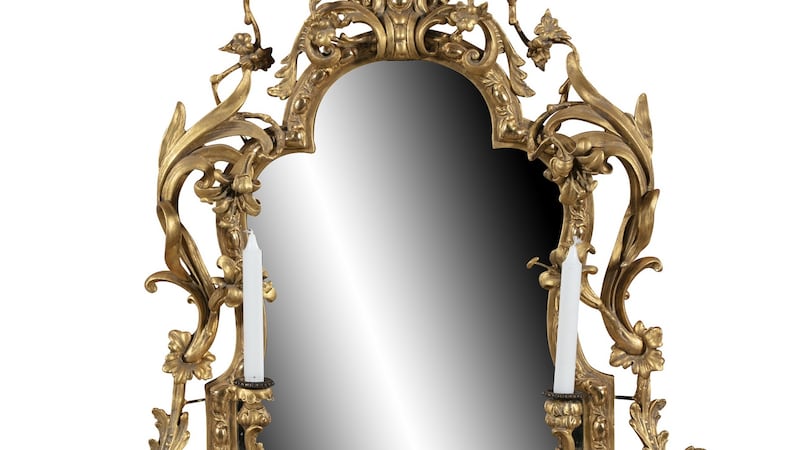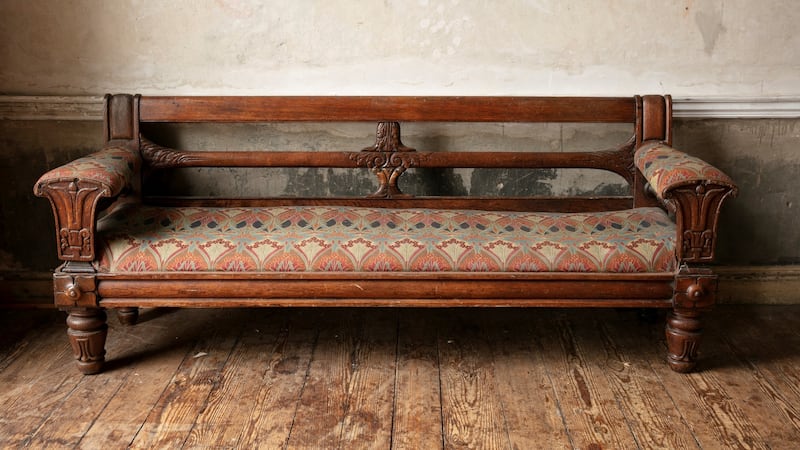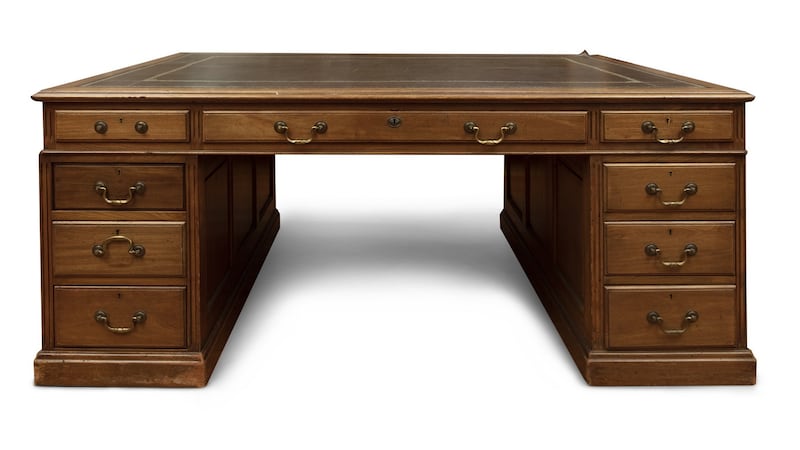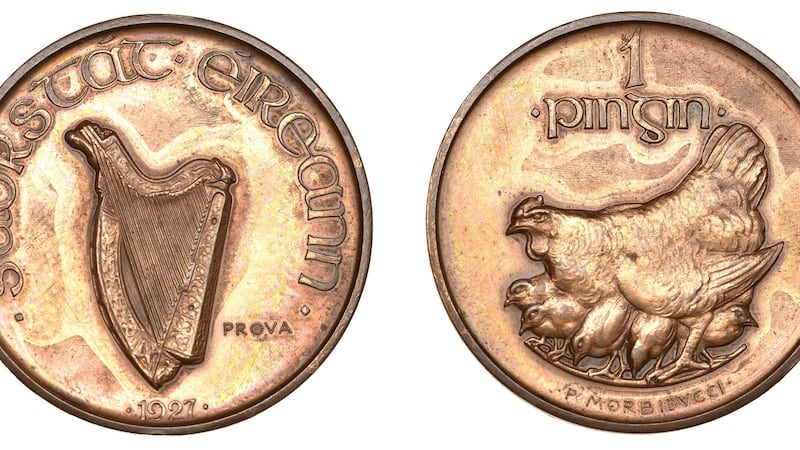Fonsie Mealy’s Spring Collectables sale is currently open online and ends this Tuesday, February 22nd.
The sale features two nice tantalus. The name of these small cabinets containing two or three alcohol decanters takes its name from the unsatisfied temptations of the Greek mythological character Tantalus, who was bound in a pool of water but never able to drink.
Like their namesake, the aim of these receptacles was to stop unauthorised people drinking the contents (in particular younger sons and servants of grand houses) so the contents, while on show, were under lock and key. Lot 97 is a particularly nice Victorian brass-bound version, listed at € 200–€300.
Also in the sale, along with numerous pieces of cut glass, Japanese and Chinese earthenware, is a 19th century Rudall, Rose and Carte concert flute (€ 600–€ 800).
The firm, which began as Rudall and Rose, and was later joined by Richard Carte, dominated the flute-making business in Britain for over 150 years.
For much of their existence, almost every professional flautist and serious amateur in the UK played on one of the company’s instruments. Not only did the company produce instruments, they also promoted concerts, for a time under the management of Richard Carte’s son Richard D’Oyly Carte, who later made his fortune as producer of Gilbert and Sullivan operas.
He also built the Savoy Theatre in London, which was the first public building in the world to be lit entirely by electricity.
The top lot in the sale, listed with a €800–€1,000 estimate, is an “important and early rare carved Chinese cinnabar lacquer box”. From the late Qing Dynasty, the profusely carved upper surface has figures beside a lake with bridges, a pagoda and lotus trees.
At home sale
Taking place this Tuesday, February 22nd, Adam’s of St Stephen’s Green will host a live At Home sale with period furniture, silver, decorative arts and paintings. Parts of the catalogue were photographed in an old property on Henrietta Street – the earliest Georgian Street in Dublin – which marries well with contemporaneous pieces.
Highlights include a fine set of 12 Regency dining chairs with carved rosette decoration (lot 267,€2,000–€2,500) and two attractive over mantel mirrors (lot 197,€800–€ 1,200 and lot 207,€600–€800).
Library pieces include a pair of elegant library chairs with carved lion mask armrests (lot 294, €800–€1,200) and a green velvet George IV armchair (lot 208,€200–€ 400).




For fans of art nouveau, there is an oak-framed settee with upholstery of the era (lot 192, €2,000–€4,000). Though demand for office desks has waned a little with the phased return to offices, the sale has a mighty partner’s desk that will require a large enough space to occupy (lot 289,€1,800–€ 2,200).
There is a good selection of well-priced jewellery too, with a stainless steel chronograph by Cartier (lot 1,€700–€900) and a lovely pair of lapis lazuli and diamond pendant earrings (lot 37,€500–€700).
Coins
What is described as “an intriguing and extremely rare” Irish coin, dating from 1927, that never entered circulation, is among the highlights of an upcoming coin sale.
The Irish Coins, Tokens and Historical Medals sale by Mayfair-based coin and medal specialists Dix, Noonan Webb, will take place on March 3rd.
The coin, known as the Free State Penny, was designed by Italian sculptor Publio Morbiducci for a competition to design Ireland’s new money in 1928.

In 1923, Morbiducci won the competition for the two-lira coin and later produced numerous important commissions such as the Monument to the Bersagliere a Porta Pia.
Though unsuccessful in the quest to design Ireland’s new money, the precise number of these pieces that now exist is uncertain, but in 1976 it was believed that only three existed in bronze, which goes to explain the estimate of £4,000–£5,000 (€4,770–€5,963).
The sale also lists a large collection of Gunmoney and Emergency Issues of 1689–1691, from the collection of John Rainey. Mr Rainey had " the largest and best collection of gunmoney in private hands" according to authors Paul and Bente R Withers, in their title Irish Gunmomney and the Emergency Issues of 1689-1691.
The most unusual high face value token coinage was issued by the deposed Catholic King James II of England who fled to France and then to Ireland. The coins were of a promissory nature and carry a month date as well as year of issue. These coins are believed to be the most extensive group to ever come up in one sale. Made from cannon metal they were only produced in two mints in Ireland: Limerick and Dublin.
Other items of interest in the sale include a silver proof half-crown from the reign of James II dating from Dublin in May 1690. Only five specimens are known to exist (£3,000-£4,000(€3,578–€4,770) while a rare half-crown from Limerick, dating from March 1690, is estimated at £300–£400 (€357–€477). fonsiemealy.ie, adams.ie, dnw.co.uk
















